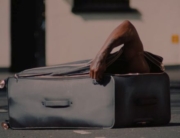Rachel Flowers can play musical notes she alone hears. In fact, she hears music in everything she tastes or experiences with her senses. She’s a musical prodigy with a unique form of synesthesia that may, in part, be due to the loss of her eyesight shortly after her birth. In his documentary, producer/director Lorenzo DeStefano deftly avoids treating Rachel’s blindness as a handicap. Instead he focuses on her remarkable talents and abilities, and the obvious joy that music brings to her life.
DeStefano spent two years filming Rachel and her family. Against all odds, Rachel grew from a 1.5 pound preemie (born 15 months premature) into a semi-independent 21-year-old. The soundtrack is an ever-present demonstration of Rachel’s virtuosity, including in the classical repertoire, jazz, and contemporary covers, as well as her own sophisticated compositions.
Flowers began playing piano by ear at the age of two, displaying the gift of perfect pitch. By four, she was playing Bach fugues. While still in grade school she began learning Braille music code and adaptive computer music applications to aid her ability to compose.
DeStefano captures footage of lessons with jazz pianist Taylor Eigsti and Grammy winner Arturo Sandoval. At a music convention, Flowers enthusiastically meets progressive rock icon Keith Emerson and Stevie Wonder. She is shown performing at home, in the studio, at events, and showcased at outdoor music venues. Her talent is on full display as she performs an original classical composition, At the End of the Day, accompanied by the Santa Barbara Youth Symphony. And her performance with the Dweezil Zappa’s band, Zappa Plays Zappa, in Las Vegas gives testimony to her musical versatility.
Both her mother and father played and performed together in a band, as did her grandparents. (There are photos of Flowers’s father playing at her bedside in the hospital after she was born.) But DeStefano’s inclusion early in the film of her mother, Jeanie, in the studio recording one of her own original songs seems a bit gratuitous and raises the suspicion that the film might be more promotional than biographical.
Nevertheless, it is impossible not to be drawn in by the very genuine expressions of jubilation on Flowers’s face after she performs or the dawning look of revelation as sounds are transformed into music inside her head. There is no question that music is the eyes with which Flowers sees the world, and DeStefano brilliantly captures this phenomenon. It makes for an inspiring portrait of an amazing young woman that, accompanied by its excellent and varied soundtrack, will have broad appeal.

















Leave A Comment